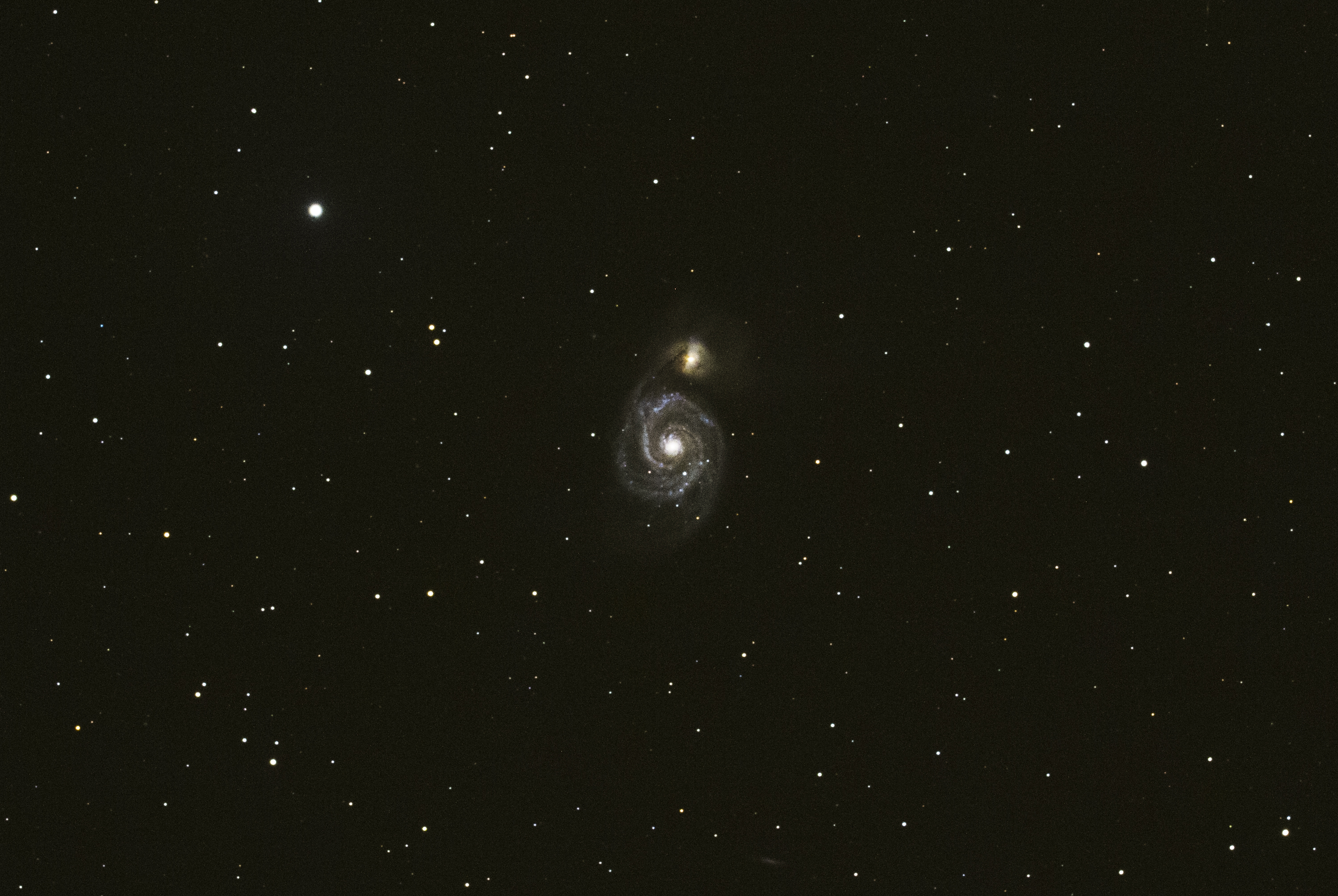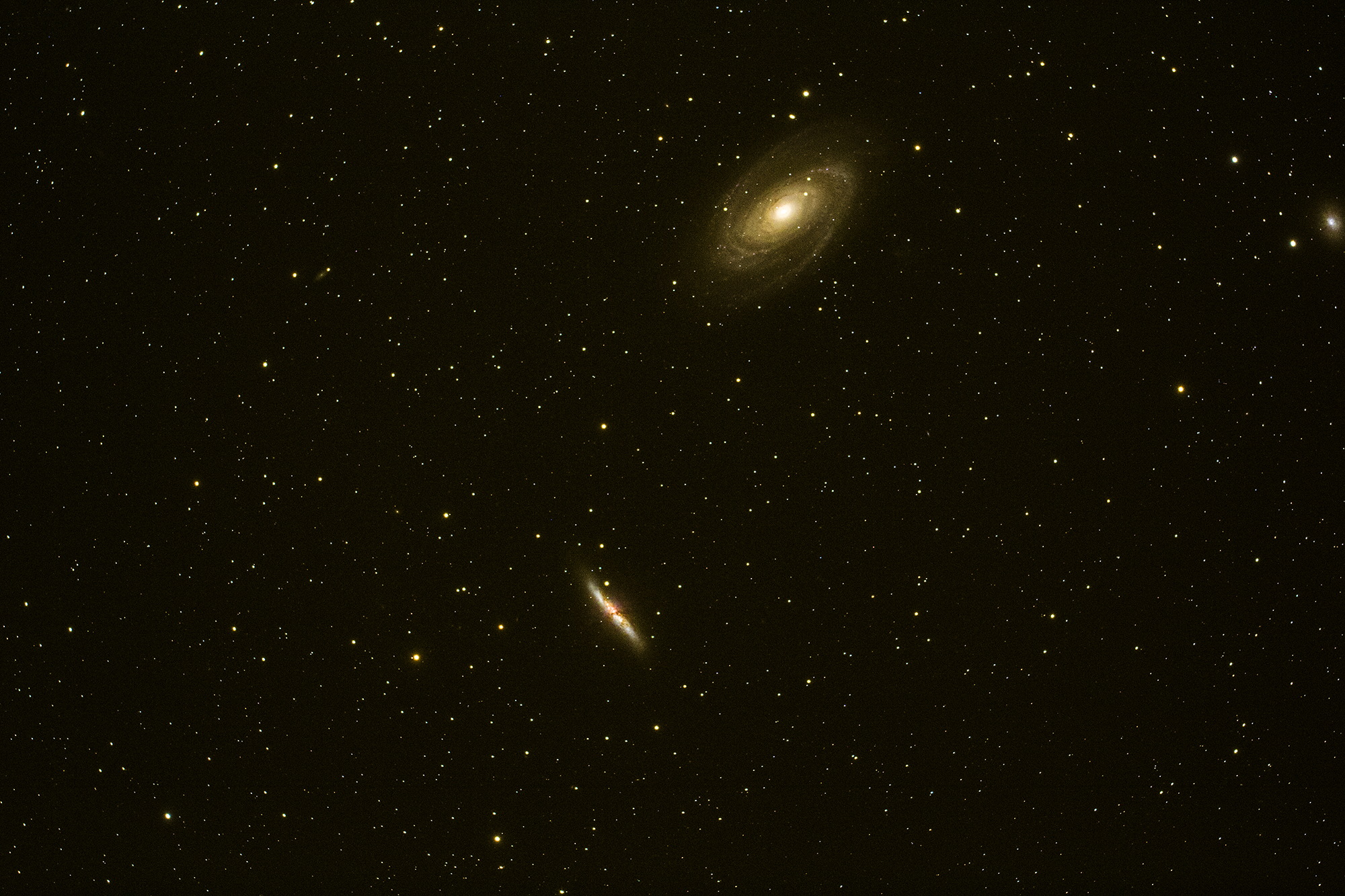The Whirlpool Galaxy
- Telescope: Stellarvue SVA130T-IS (f/5 configuration)
- Optical Configuration: 0.72x Field Flattener & Reducer (f/5)
- Camera: Canon 60Da
- Single exposure
- Shutter Speed: 5 min.
- ISO: 800
- Processing: Photoshop CC
- Imaging Location: Sierra Nevada Mountains (Altitude: 8,600 ft.)
The Whirlpool Galaxy (M51) is a Seyfert galaxy approximately 31 million light-years from Earth. Seyfert galaxies make up only about 10% of all galaxies and are thought to contain a supermassive black hole at their centers, giving them a very bright Active Galactic Nucleus (AGN).
In the past, it was thought that the Whirlpool Galaxy was actually two colliding galaxies in which the larger galaxy was swallowing up the smaller one. However, recent high-resolution images taken by the Hubble Space Telescope indicate that the two galaxies are proximate, but not materially involved. The smaller one, in fact, is farther away and moving behind the larger one from our perspective.

